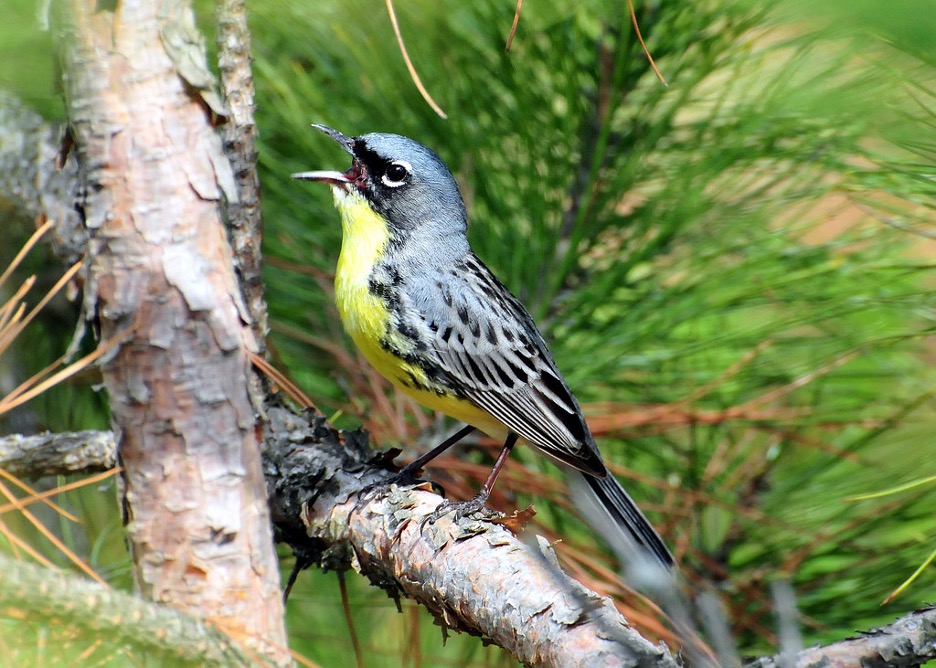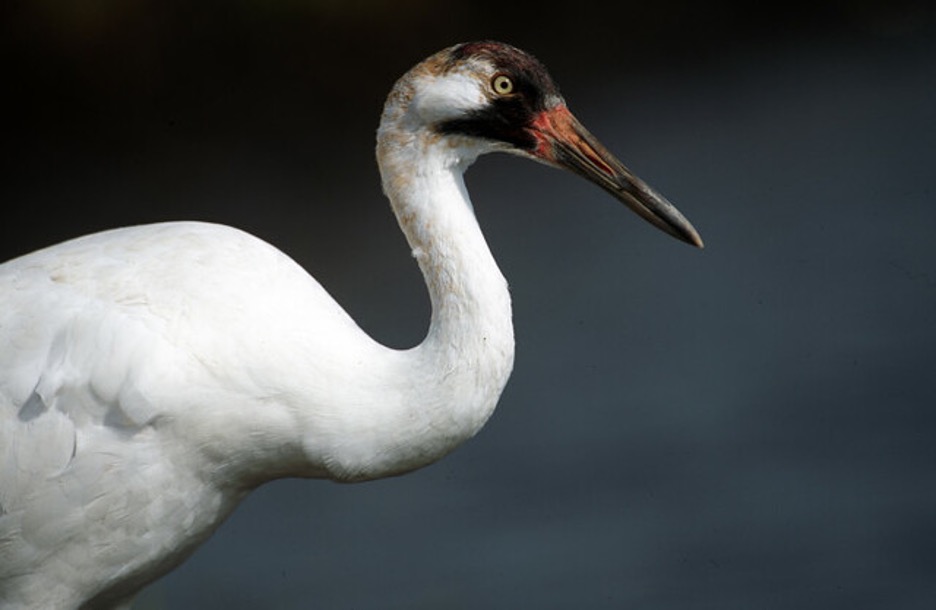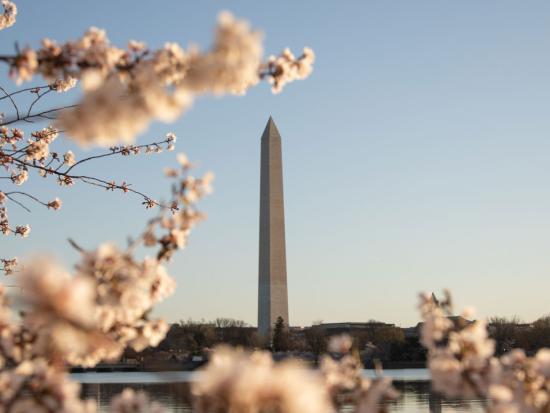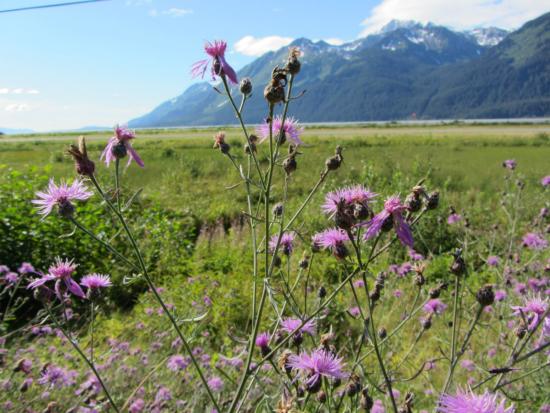Celebrating 50 Years of Success in Wildlife Conservation
You are viewing ARCHIVED content published online before January 20, 2025. Please note that this content is NOT UPDATED, and links may not work. Additionally, any previously issued diversity, equity, inclusion or gender-related guidance on this webpage should be considered rescinded. For current information, visit https://www.doi.gov/news/newsroom
This year marks the 50th anniversary of the Endangered Species Act, providing the opportunity to reflect on the progress made and the work ahead for protecting our nation's endangered species and their habitats. The Act has saved hundreds of species from extinction and continues to protect and preserve some of our most beloved animals and plants. It has also helped to create a better understanding of how human activities can impact the environment and how we can work together to protect it. Perhaps most importantly, this anniversary is a reminder that conservation efforts are essential for stemming the worsening impacts of climate change, protecting biodiversity and preserving our planet for ourselves and future generations.
The ESA was enacted in 1973 as a response to the declining populations of many species of animals and plants. The Act was designed to protect and recover species at risk of extinction and to promote the conservation of ecosystems and habitats necessary for the survival of those species. Each of these species is a part of the web of life, each with a unique cultural and biological community, performing services that are essential to our combined well-being. By conserving them, guided by the best-available science, we help protect healthy air, land, and water for everyone.
The innovative and determined actions taken by the Interior Department’s U.S. Fish and Wildlife Service team members and partners over these past decades have helped prevent some species from needing the protection of the Act and provided the critical information for decision-making that contributes to the success of the Act.
The ESA was enacted to protect and recover species at risk of disappearing forever. It has become one of the most significant wildlife conservation laws in the United States and has proven instrumental in protecting numerous species.
Iconic Species Make a Remarkable Comeback
In its first 50 years, the ESA has been credited with saving 99% of listed species from extinction thanks to the collaborative actions of federal agencies, state, local and Tribal governments, conservation organizations and private citizens. Here are some of the notable successes.
The Bald Eagle: We Nearly Lost Our National Symbol
In the mid-1900s, our national symbol was in danger of extinction throughout most of its range. Bald eagle populations were negatively impacted by habitat destruction and degradation, as well as illegal shooting and the contamination of their food source—largely from the insecticide Dichlorodiphenyltrichloroethane, known as DDT. Habitat protection afforded by the ESA, the federal government’s banning of DDT, and conservation actions taken by the American public helped bald eagles make a remarkable recovery. They were removed from the list of endangered species in 2007. Bald eagle sightings are now common during both the nesting season and throughout the winter. The recovery of the bald eagle is a testament to the effectiveness of the ESA in conserving and recovering imperiled species.
Kirtland’s Warbler Exceeds Recovery Expectations
The Kirtland’s warbler is a small, yellow-bellied songbird found in the jack pine forests of Michigan, Wisconsin and Ontario. Threatened by habitat loss and parasitism, the species was listed under the ESA in 1973. Multiple partners worked to restore the warbler’s habitat and control parasitic threats. Thanks to their efforts, the species rebounded from 170 breeding pairs in the 1970s and ‘80s to 2,300 breeding pairs in 2019, exceeding recovery plan goals. The warbler was removed from the endangered species list in 2019.
American Alligators Are Living Fossils That Continue to Survive
The American alligator is a member of the crocodile family – living fossils from the Age of Reptiles – who have survived on earth for over 200 million years. The American alligator populations reached an all-time low in the 1950s, primarily due to market hunting and loss of habitat. The species was listed as endangered in 1967 (under the Endangered Species Preservation Act of 1966, a predecessor to the ESA), but made a significant recovery due to ESA protections and was removed from the list of endangered species in 1987. The recovery of the American alligator highlights the importance of habitat protection and conservation efforts in promoting species recovery.
Whooping Crane’s Steady Recovery Is a Tall Order
The whooping crane occurs only in North America, specifically within Canada and the United States, and is North America’s tallest bird. Though it once ranged throughout the Great Plains and Gulf Coast regions, the Whooping Crane population was decimated by hunting and habitat loss. The whooping crane was listed as endangered in 1970, has made a steady recovery, and its population has increased from just 21 individuals in 1941 to over 500 individuals today. The whooping crane’s progress toward recovery demonstrates the power of species management and reintroduction programs in promoting species recovery under the ESA.
Peregrine Falcons Demonstrate That Conservation Can Save a Species
It is estimated that prior to the 1940s, there were approximately 3,875 nesting pairs of peregrines in North America. From the 1940s through the 1960s the total population dropped dramatically, due in large part to the introduction of synthetic pesticides to the environment. By 1975, there were only 324 known nesting pairs of American peregrine falcons in the United States. This incredibly fast hunter was listed as endangered in 1970 but has made a remarkable recovery due to the banning of the pesticide DDT and conservation efforts. It was removed from the list of endangered species in 1999. The recovery of the peregrine falcon demonstrates the importance of reducing threats and promoting conservation efforts to promote species recovery.
The Next 50 Years of the ESA
These ESA success stories demonstrate the effectiveness of the ESA in conserving and recovering imperiled species and highlight the importance of continued efforts to protect and conserve species threatened with extinction.
Animals, plants, insects, and all living things are part of the balance of nature that our world relies on, but today there are still species at risk of being lost forever. Plants and wildlife make our lives better. And they need our active protection. We have an obligation to protect our planet’s biodiversity now and for future generations.
Initiatives and investments from the Biden-Harris administration – including the America the Beautiful initiative, the Bipartisan Infrastructure Law, Inflation Reduction Act, and other key investments – will help ensure we can continue to conserve species and their habitats, build new and sustained partnerships, and create a framework to guide our efforts. This work will require not just an all-of-government approach, but a continued collaborative effort with state, local and Tribal governments, private landowners, and conservation organizations.
Throughout this momentous year, the Department of the Interior will celebrate the importance of the ESA in preventing the extinction of imperiled species, promoting the recovery of wildlife and conserving the habitats upon which they depend. We will also outline steps to ensure that the ESA remains flexible and able to serve the next 50 years.
- Blog Post
- Blog Post
- Blog Post









